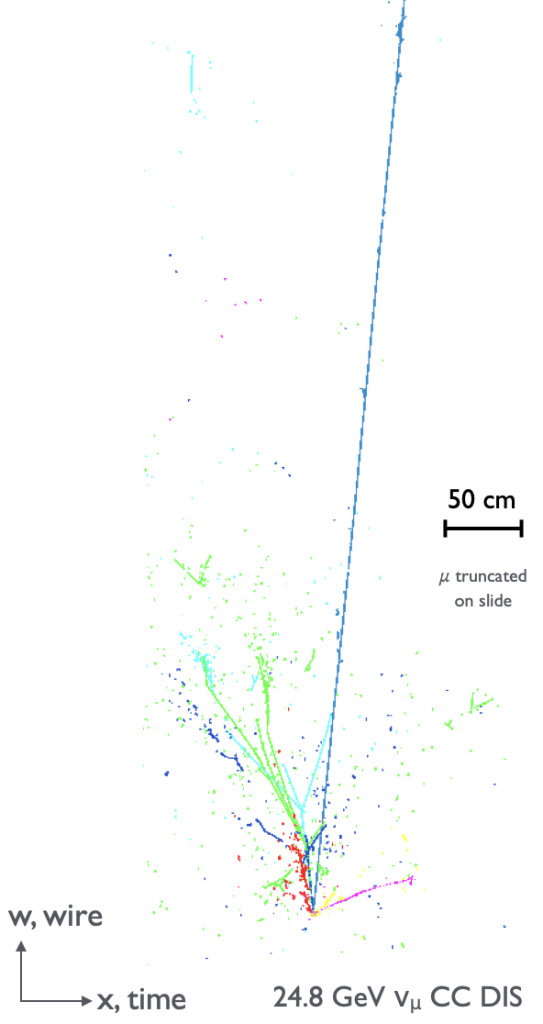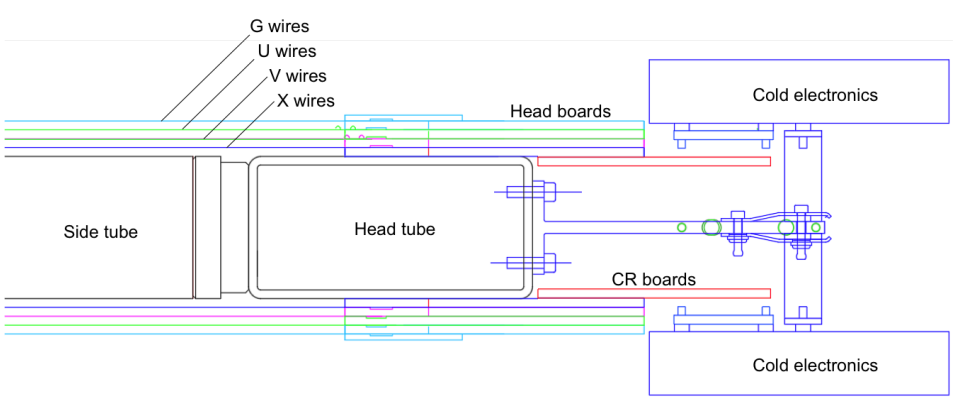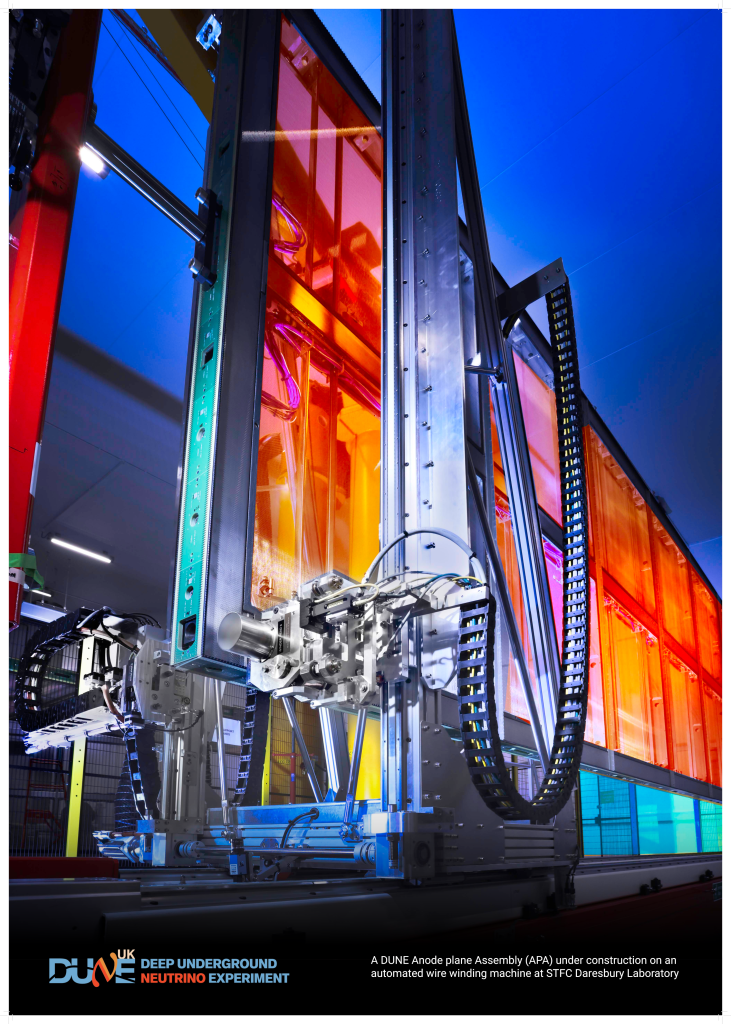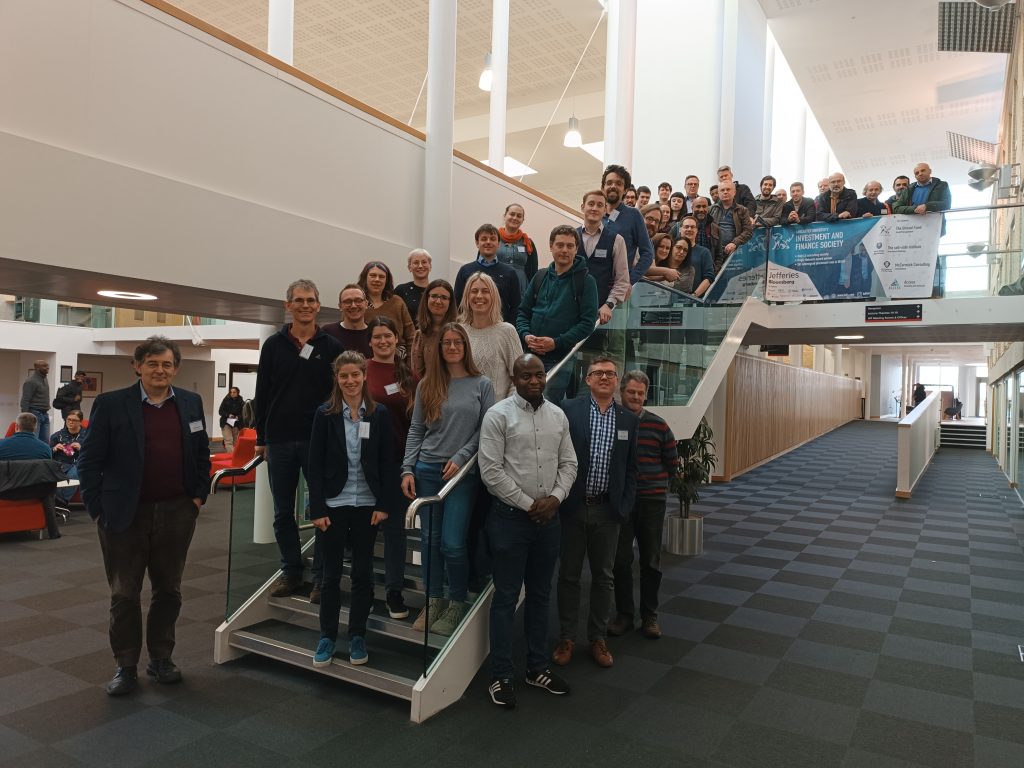UK Involvement
The DUNE UK collaboration effort is providing significant effort to areas key to the success of the DUNE project. The main deliverables include the Data Acquisition System, 150 Anode Plane Assemblies (APAs) for two far detector modules, leading contributions to the software and computing infrastructure, and the preparation for physics exploitation. The UK government has invested £65 million in the Deep Underground Neutrino Experiment hosted by Fermilab in the US.
The Technology behind DUNE
Reconstruction Software

The UK has a leading role in the development of the Pandora LArTPC pattern recognition software and high-level reconstruction software for the Fermilab LAr neutrino programme. The goal of the UK-led reconstruction team is to deliver production-ready reconstruction software for the commissioning and exploitation of the DUNE and ProtoDUNE detectors. The Pandora implementation will be validated and tuned using the test beam and cosmic-ray data from the ProtoDUNE detectors.
Pandora implements advanced algorithms and tools to compare 2D and 3D event topologies, where this functionality will be harnessed to handle the complex multi-GeV neutrino interactions at DUNE.
Distributed Computing
DUNE will use the same underlying distributed computing infrastructure and software fabric as the worldwide LHC Computing Grid (WLCG), leveraging the large amount of work done in the LHC era. DUNE computing will build upon a strong platform of proven infrastructure and expertise. The UK computing team has already established a significant role in several areas, is providing resources to ProtoDUNE, and has established itself as a software leader in the main DUNE project.
Calibration with Cosmic-Ray Muons at the DUNE Far Detector
Owing to the complexity and scale of the DUNE detector systems, many elements of the detector’s response to particle interactions must have dedicated calibration procedures in order to drive down the systematic uncertainties associated with our physics measurements and achieve the precision goals of the experiment. Multiple sources of data exist that act as ‘standard candles’ and may aid in the calibration of the DUNE detectors. One such source is cosmic-ray muons, which are produced naturally in our atmosphere and therefore provide a free source of calibration data.
Exploiting the Data
Data Acquisition System
The DUNE data acquisition system for the far and near detectors aims to provide a coherent set of systems across DUNE. It implements a flexible combination of high-speed serial links, ethernet, field programmable gate arrays (FPGAs) and high-end computers. It maximises the use of commercial off-the-shelf (COTS) equipment and standardises around industry protocols. It is in a challenging underground environment, so it is redundant to guarantee the largest up-time. It needs to be easy to operate and monitor.
The UK is the largest contributor to this system. We contribute to all aspects of the development, including the firmware and software. We also provide almost all the front-out readout hardware and a significant part of the trigger servers for the first two modules.
Essential Experimental Apparatus
APA Production

The APAs – Anode Plane Assemblies – are a critical component of the LArTPC, collecting the ionisation charge and allowing reconstruction of detector activity with mm-scale resolution. The APAs do this by reading out electrical signals from the neutrino interactions. They are huge rectangular planes covered with thousands of copper-beryllium wires, about the width of a human hair. These 6 m x 2.3 m planes, built in the UK, (one of which is shown below) have four layers of 150 μm beryllium-copper wire wound around them.
APA Production plan is to build 150 APAs with the help of university partners in the North West at the Daresbury Laboratory. This will be half of the APAs required for the first two 10kt far detector modules. The UK factory will be the biggest in the DUNE collaboration; the remaining 150 APAs will be produced at two or three factories in the US.
The UK APA team have successfully demonstrated the manufacturing process by building APAs for the ProtoDUNE and SBND detectors. The UK technical staff have been leading the development of the APA-production procedures, based on ProtoDUNE experience, to allow mass production for DUNE.

The DUNE UK Collaboration
